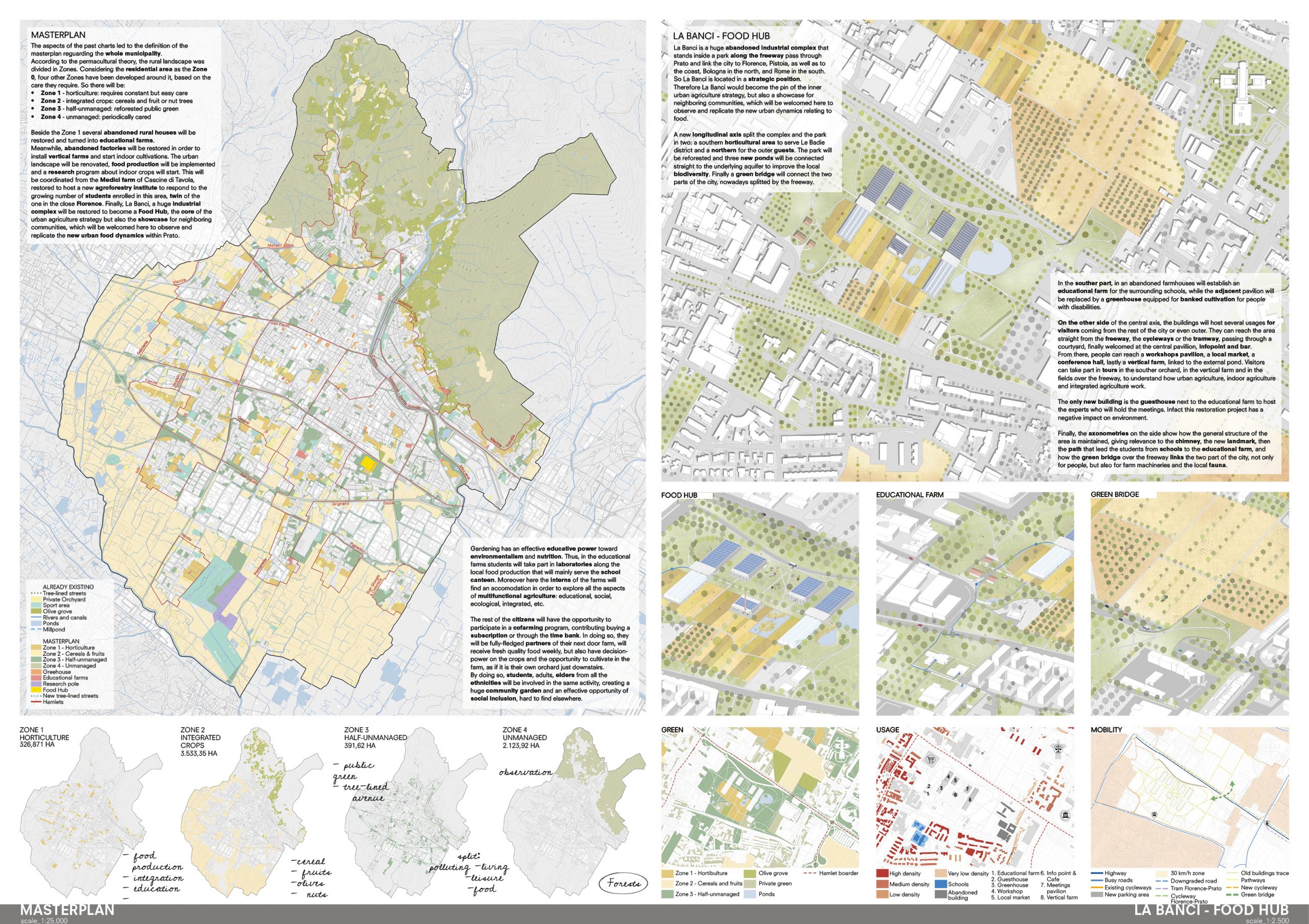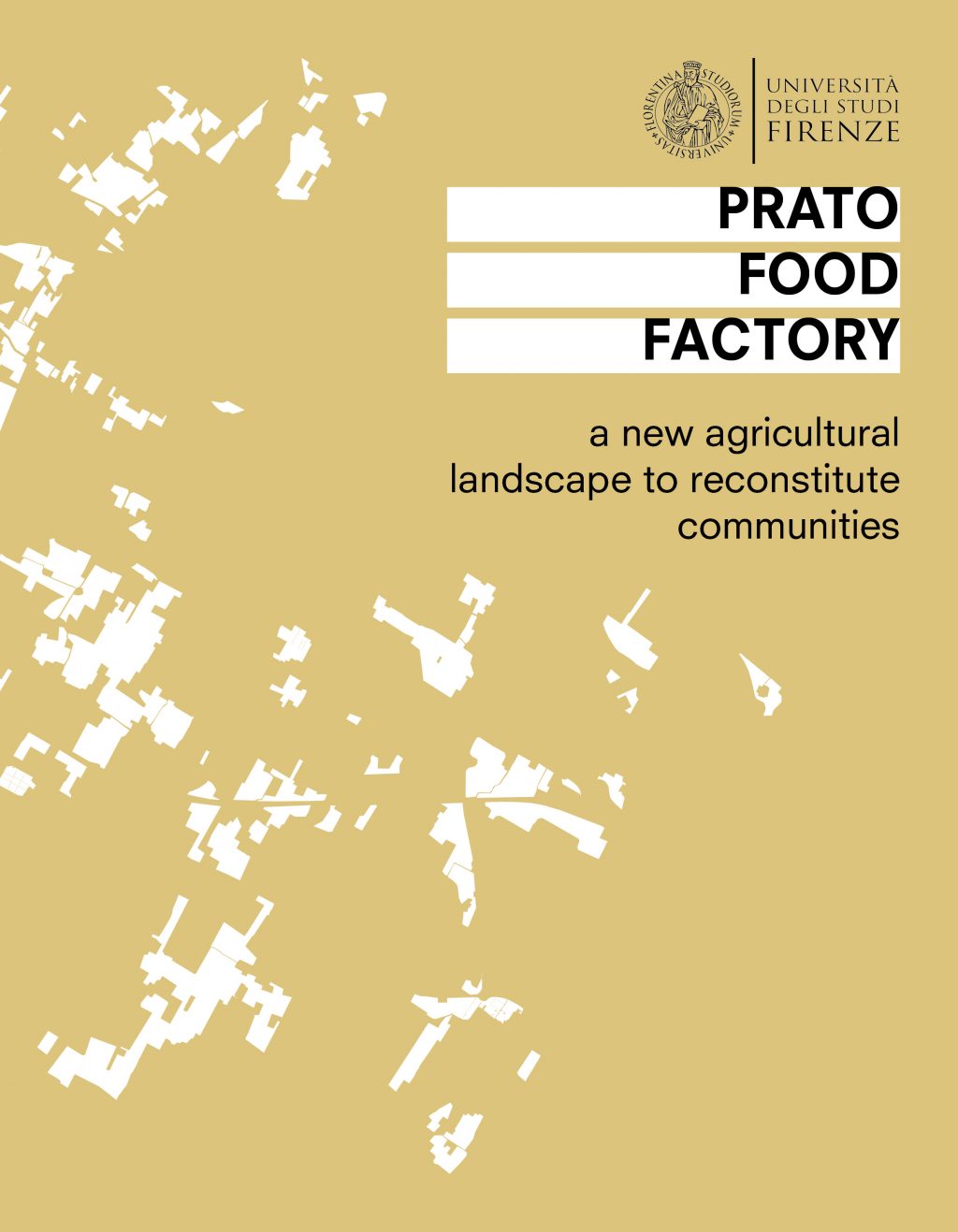In 10.000 a.C. the invention of agriculture allowed men to settle down. For thousands of years agriculture has shaped the anthropized landscape and human activities, bounding man to nature and its cycles. Afterwards the mechanized work and the population growth generated a real exodus from the countryside into the city, so that the latter spread into the surrounding farmland.
Whilst the urban inhabitants no longer feel part of a community inside this new anthropic landscape, on the other hand, they have lost every bond with the surrounding territory, anymore adequate to respond the resources demand of the new big city. Foodwise, the supply is now entrusted to the large retail trade, that grants food security, at least in terms of quantity.
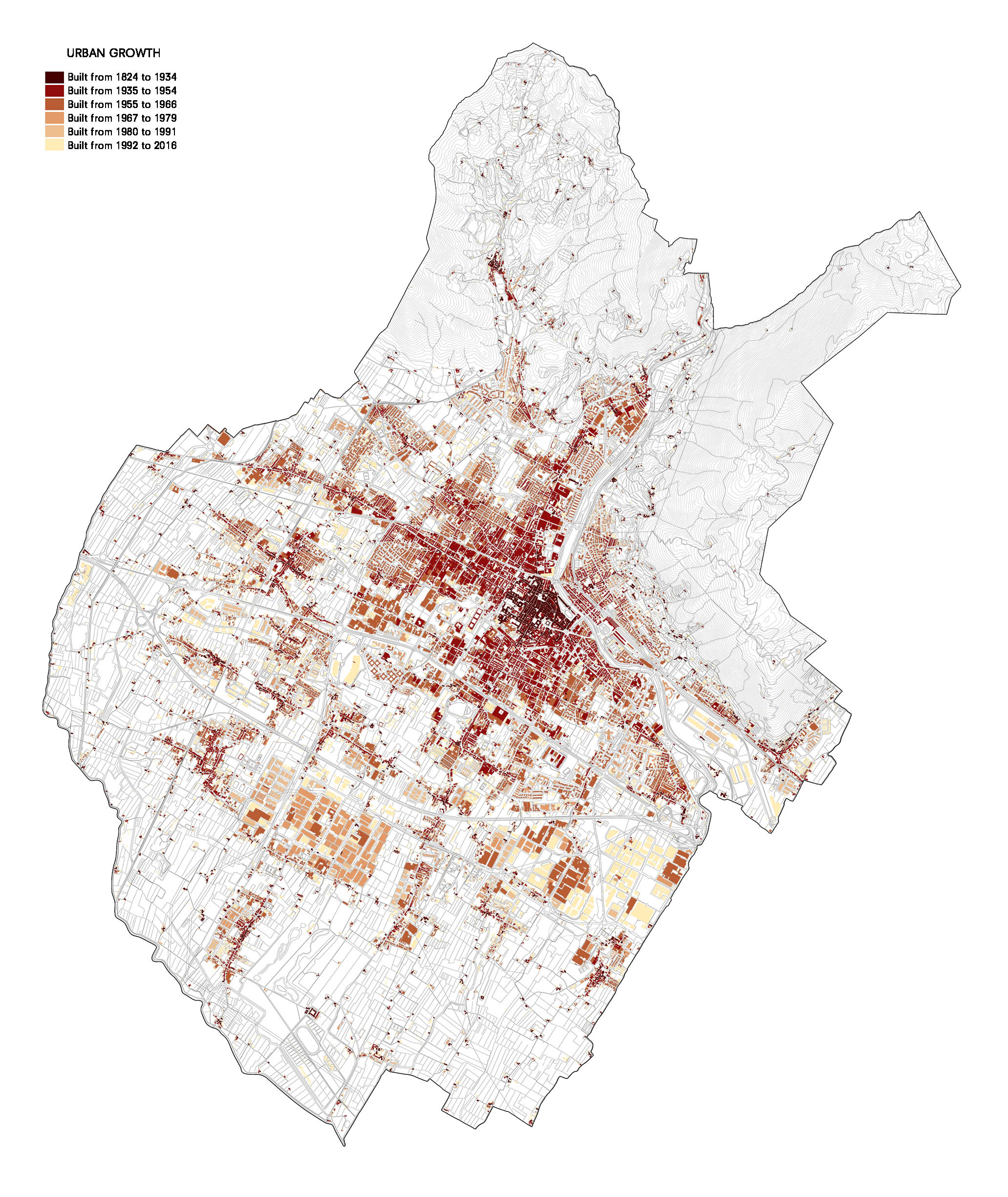
Nevertheless, nowadays consumers are in search of quality, generating a countertrend in the food market, showing an increasing interest in the short chain supply for many reasons: quality, traceability, ethic, environment, etc. To meet this demand, it is necessary to bring the producers closer to the consumers again, through a (peri-)urban agriculture strategy. By doing so, it is possible not only to provide fresh quality food, but also to benefit from the multifunctionality of agriculture: improve biodiversity and related ecosystem services, grant social cohesion opportunity, environmental and nutrition education, etc. Prato, in Tuscany, lends itself to implant a vast urban agriculture strategy and explore its benefits on the inhabitants. In fact, a deep analysis on its territory reveals many enclosed farmlands within the city, as a result of the urban growth of the numerous hamlets that compose the city. These open areas are small and sparse, but still relevant in providing important ecosystem services to the citizenship, as decreasing air pollution, noise pollution and urban heat islands.
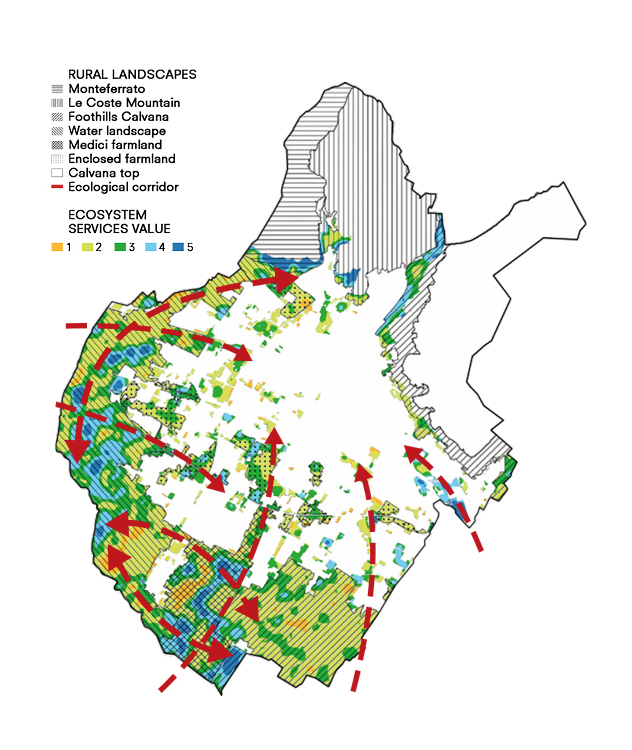
So, these enclosed agricultural areas can be restored in order to become the pin of an urban agriculture strategy. According to the permaculture approach, the whole rural territory is divided into four Zones, the first of which includes the enclosed farmlands close to the residential areas, to develop horticulture. In fact, by changing the crops and opening these farmlands to the citizenship, it will be possible to provide not only fresh quality food, but also give an answer to many urban issues. For example, this can improve biodiversity, but also social inclusion among different ages and ethnicities, like in community gardens, or even education on environment and nutrition, through educational farms. Finally, marketwise, local food production and related demand can encounter each other thanks to a cofarming program. All these aspects are considered to develop the masterplan chart, then detailed further focusing on the restoration of the industrial area, called Ex Banci. This will turn into the Food Hub that will coordinate the urban agriculture strategy, but it will also work as a educational centre with events and laboratories open to the whole citizenship but also to the surrounding communities, here welcomed in order to inspire new urban food production models.
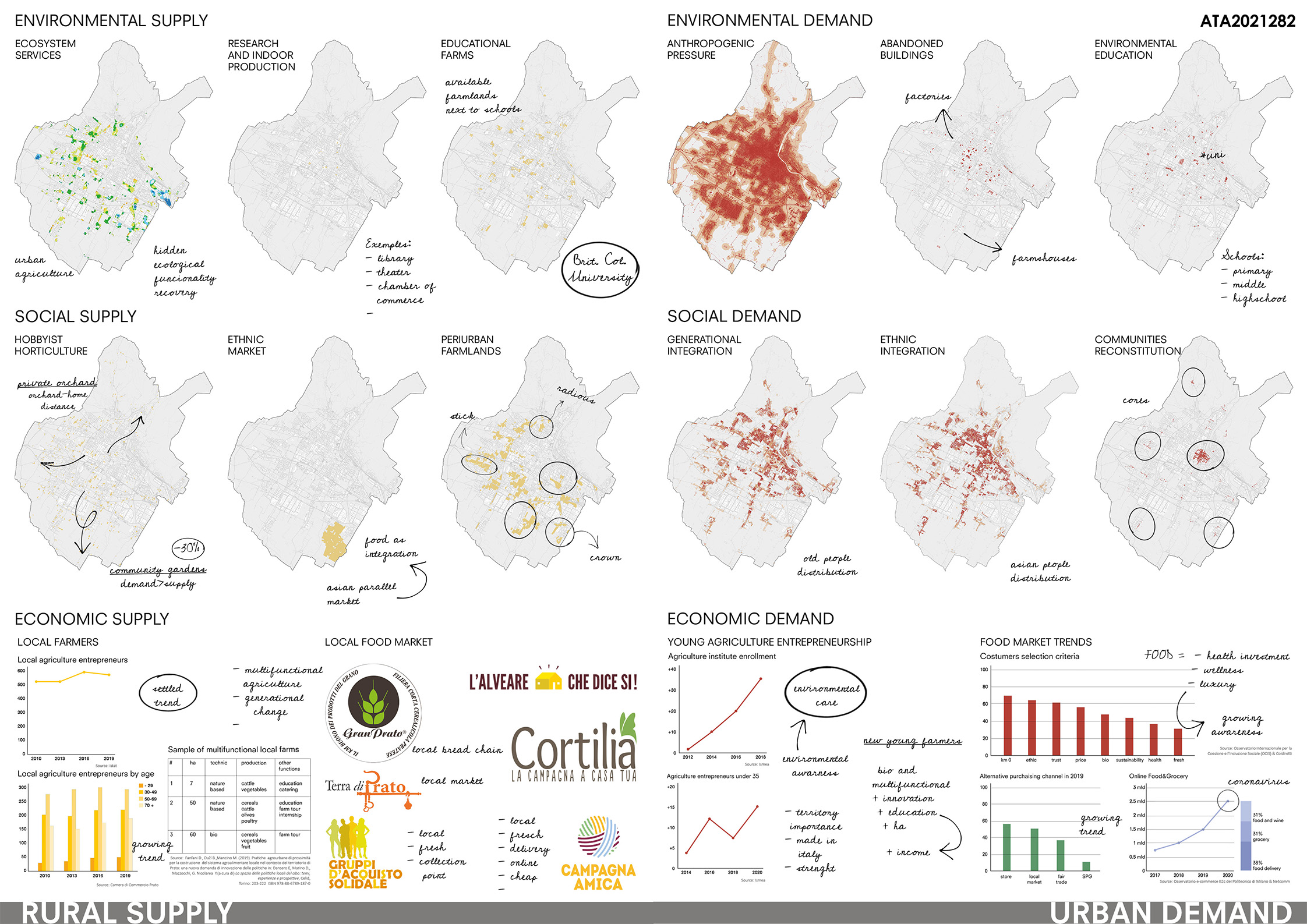
The Board:
